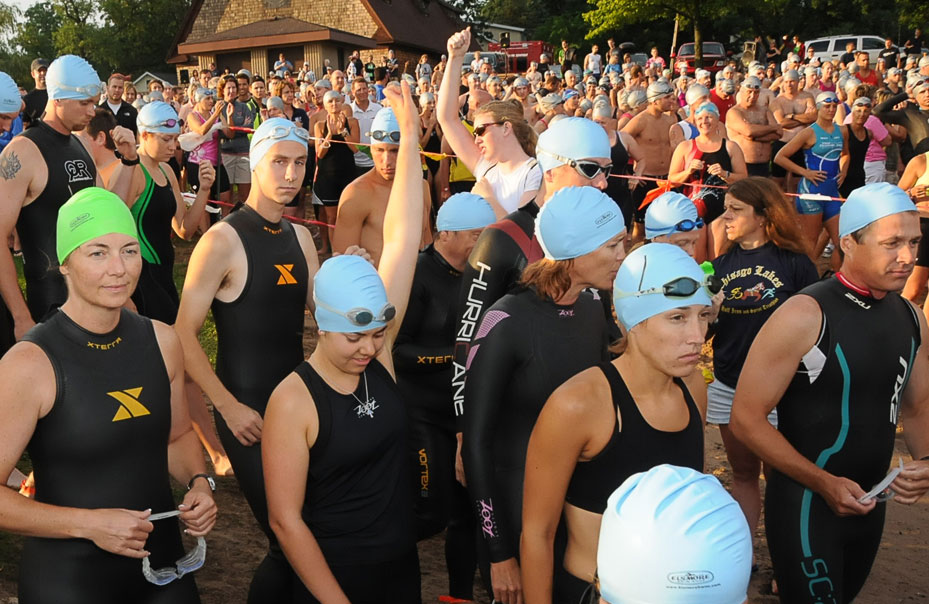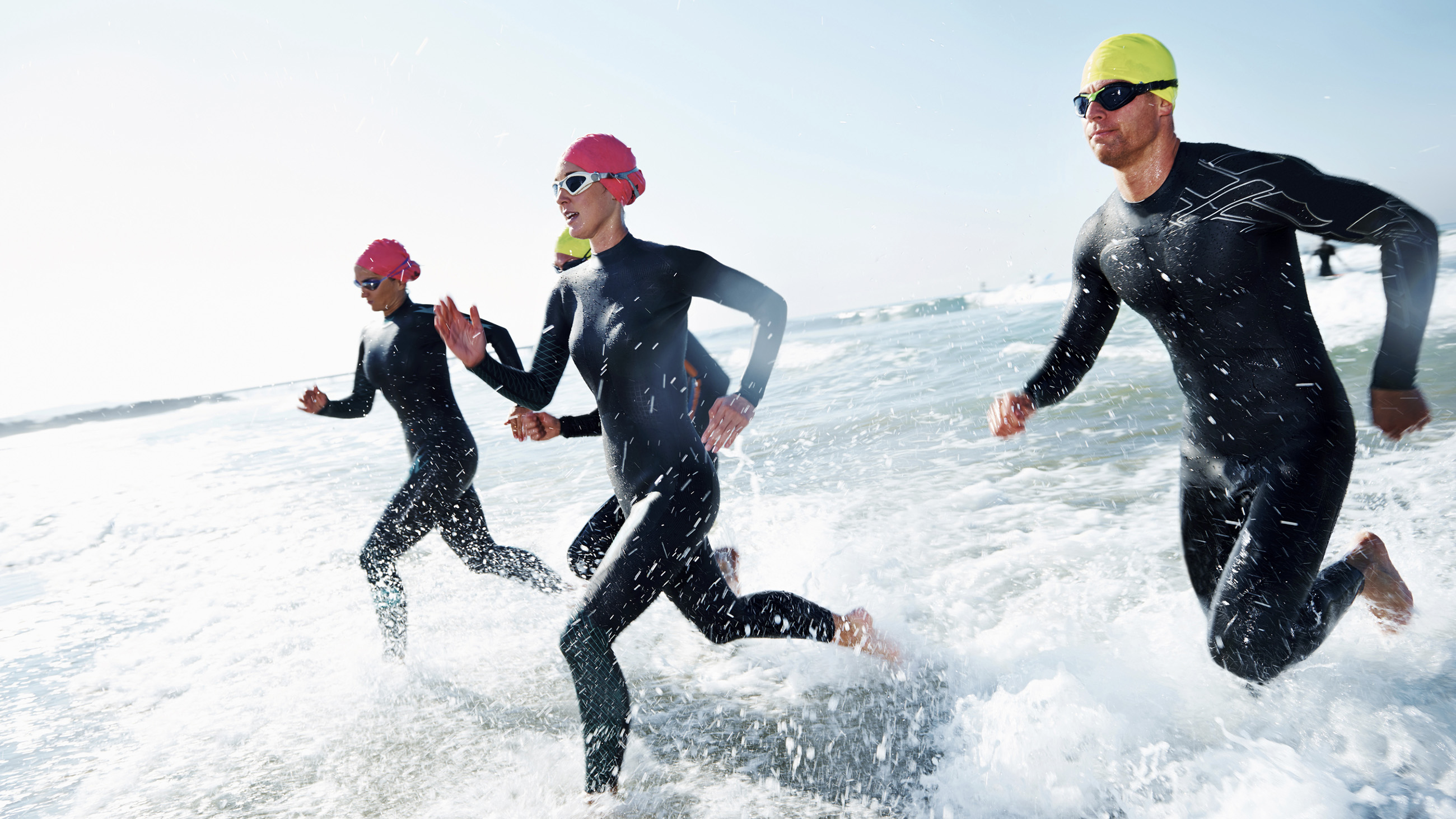Revisiting the Triathlon Death Rate
As part of rising interest among exercise enthusiasts in extreme fitness, roughly 500,000 Americans participate in events sanctioned by USA Triathlon every year.
The organization’s collection of official events include aquathlons (swimming and running) and aquabike (swimming and biking), among others. Triathlons — as may be evident by the name — involve all three disciplines, and while these competitions showcase athletes’ endurance and speed, they’re not without their risks. In June, a 56-year-old man began flailing during the swimming portion of an event in Rochester, Minnesota. He died on the scene. Shortly afterward, 24-year-old Samuel Fischer collapsed after completing in a triathlon in Stamford, Connecticut. The race’s onsite medics failed to revive him.

Of course, two fatalities among hundreds of thousands of triathlon participants, while tragic, may not seem all that surprising, given the punishing physicality of such events. But is there a larger story lurking in the data on triathlon deaths?
That was the suspicion back in 2010 of a group of doctors and researchers from the Minneapolis Heart Institute Foundation. They lifted data from USA Triathlon’s participant rosters from 2006 through 2008 to generate a fatality rate for the sport. Their results, published in a brief article that year in the Journal of the American Medical Association, found a consistent and significant number of triathlon participants were dying during their races: For every 100,000 triathlon participants, the researchers suggested, there were roughly 1.5 fatalities.
USA Triathlon took issue with the study’s data, which only included a small number of sanctioned events. So Kevin Harris, the primary author on the Minneapolis Heart Institute study, re-did the analysis, looking at 30 years’ worth of U.S. triathlon events from 1985 and 2015. The research, which Harris presented this spring at the American College of Cardiology’s annual conference, found that the rate was the same: 1.5 deaths for every 100,000 participants.
“Roughly double the rate of deaths from a marathon,” said Harris.
USA Triathlon’s own study of triathlon deaths between 2003 and 2011 shows a slightly smaller, but very similar, rate: 1 for every 75,000.
Still, it’s not entirely clear why triathlons should prove twice as deadly as a marathon — though there are some points for speculation. For one thing, buying bikes, wetsuits and race entries is expensive, which means participating in a triathlon is a rich man’s game: The average income of a triathlon participant is $126,000 a year. As such, the sport skews older, with the largest group of participants between 40 and 49 years old. That’s also the group most likely to die during a race. Marathon runners, meanwhile, are fairly evenly split age-wise between those who are over and under 40.
Gender and heart health could also be a factor. “The majority of victims are men, most in their middle age,” Harris said of triathletes. A full 55 percent of the victims in the study had evidence of cardiovascular disease. “When you hear all of that, it’s easy to point a finger at what might be the target group,” Harris said.
Still, he isn’t convinced that age and gender are the sole factors to consider. It’s also the structure of the race, he suggests. As it turns out, the vast majority of deaths happen during the swimming portion of the triathlon. Of the 106 deaths analyzed, 65 percent occurred while swimming, compared to 20 percent while biking and just 8 percent while running.
Swimming in a triathlon is a lot different than swimming laps in a pool. Competitors must deal with waves, changing temperatures, and a sea of other swimmers blocking their view of the finish line. “The stress response is enormous,” says Harris. “It’s not unusual to see people coming out of the water at max heart rate.”
There’s also a limited system for opting-out while swimming. “Runners, they can stop, they can rest, they can call for help,” says Harris. “It’s a little bit difficult in a body of water — it’s difficult for the rescuers to get to you.”
Lawrence L. Creswell, a cardiac surgeon at the University of Mississippi Medical Center and co-author of Harris’ recent research, has worked with USA Triathlon to develop standards to reduce the rate of deaths. Creswell says that just getting participants of a certain age or with a history of cardiovascular disease to take a stress test before racing could reduce the fatality rate. And on its safety page, USA Triathlon recommends people get a physical examination focused on heart health before participating.
But Creswell, who races in triathlons himself, doesn’t think that the research should dissuade first-time participants from trying.
“There are all sorts of benefits that come with exercise — better healing health, better bone health, better cognitive function, less risk of cancer,” he says. “There’s a small risk that comes with exercise and that small risk happens whether you’re at the running race, or whether you’re on the treadmill at the hotel or playing ping pong on the cruise ship. That risk is small, but it’s real.”











Comments are automatically closed one year after article publication. Archived comments are below.
Another factor to consider is in the swim you’re literally going from 0-60 with arms and legs all moving as the heart deals with this sudden demand on the body. In cold water swims (60 – 70F) controlling and holding your breathing also becomes a challenge. I’ve raced in over 20 triathlons and my advice is always start off slow, let the body adjust and proceed at a comfortable pace.